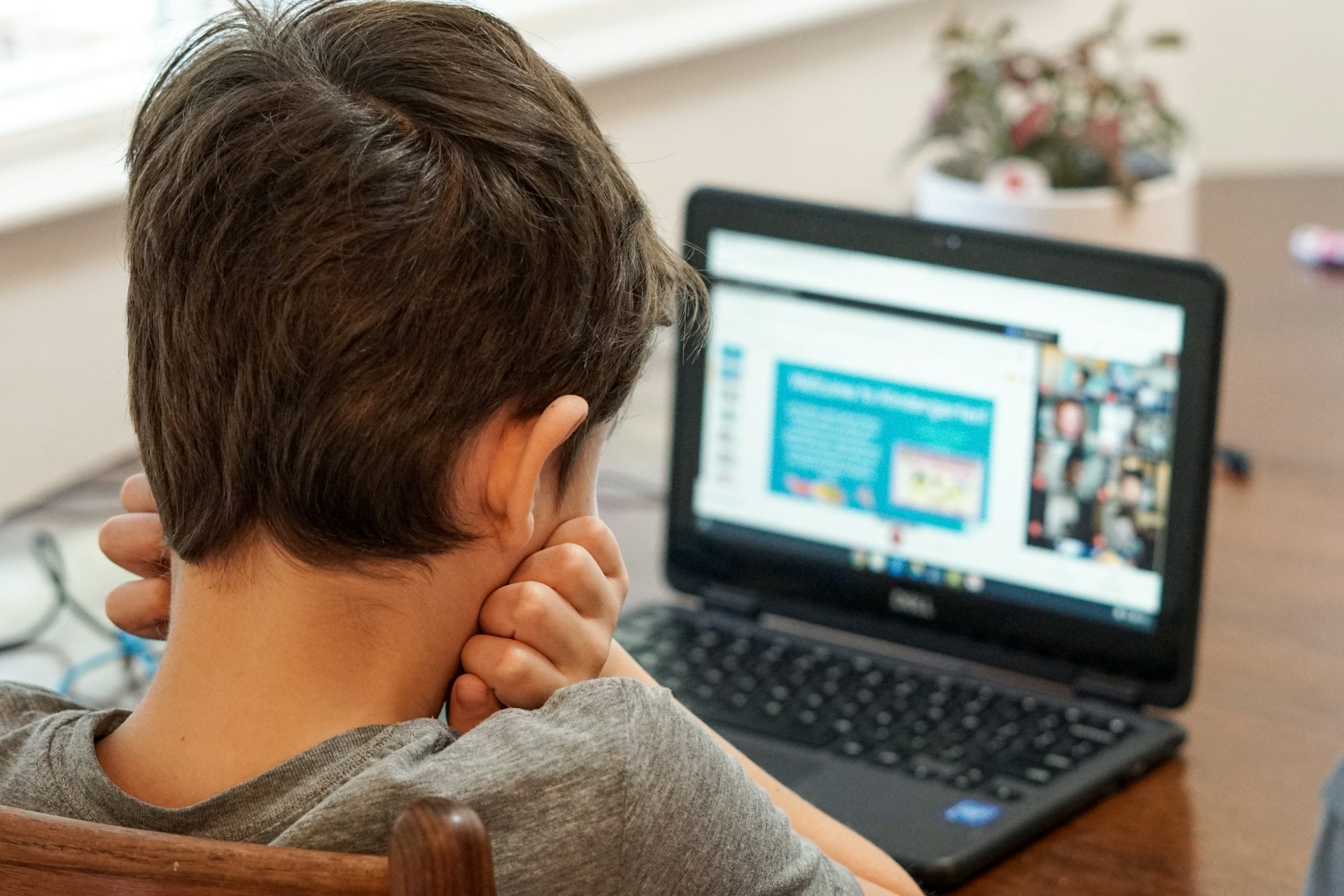Have you ever wished you could unlock your hidden creativity without leaving your couch or changing out of your favorite pajamas? Well, you’re in luck, because learning creative skills online has never been easier, more exciting, or more fun than it is today. Whether you want to sketch, design, edit videos, or finally understand how to use that fancy digital camera, the online world is filled with opportunities waiting for you. The best part is that you don’t need expensive tools or years of training to begin—just a curious mind and an internet connection.
Choosing the Right Platform for Your Needs

When you start your creative learning journey, the very first challenge is picking the right online platform. With so many options out there, it’s easy to feel overwhelmed, but here’s a little secret—you don’t have to overthink it. Instead, look for platforms that are built around your creative goals, whether that’s drawing, design, writing, or filmmaking.
Some platforms are like giant libraries of creative knowledge where you can explore almost any skill imaginable. These are fantastic if you enjoy variety and want the freedom to try different hobbies before committing to one. Other platforms specialize in specific creative fields, giving you in-depth lessons with experts who live and breathe the craft. Choosing the right fit is less about finding the “best” site overall and more about finding the one that feels comfortable for you personally.
Remember, online learning is meant to be fun and flexible, not stressful or intimidating. So, think about what excites you most. Do you want to create beautiful illustrations, launch a YouTube channel, or even learn the art of storytelling? Once you know your goals, the perfect platform will practically choose itself.
Structuring Your Learning Path Effectively
Start with beginner-friendly courses that focus on the fundamentals. Think of it as laying the foundation for a house. If you rush straight to advanced lessons without the basics, everything feels shaky, and you’ll probably give up. By focusing on one course at a time and setting small goals, you make steady progress without feeling overwhelmed.
Another great strategy is combining structured courses with creative practice projects. For example, if you’re learning graphic design, don’t just watch the lessons—design a small poster, logo, or Instagram graphic to test your skills. These mini-projects not only boost your confidence but also give you something to show off when you’re ready to share your progress with friends, family, or even potential clients.
And here’s a little bonus tip: celebrate small wins along the way. Every finished sketch, edited video, or new creative experiment deserves a round of applause. Learning online isn’t about rushing to the finish line—it’s about enjoying the creative ride.
Overcoming Self-Doubt in Online Learning
If you’ve ever thought, “I’m not creative enough” or “I’ll never be as good as that person,” you’re definitely not alone. Self-doubt is one of the sneakiest roadblocks that stop people from fully embracing their creative journey. But here’s the good news—you can learn how to shut down those doubts and keep moving forward.
The first step is understanding that creativity is not about perfection. It’s about exploration, expression, and practice. Nobody starts out as a professional illustrator, video editor, or musician. Everyone you admire today once sat where you are now—struggling to draw a straight line or edit a basic clip. The only difference is that they kept going, one small step at a time.
Another great way to overcome self-doubt is by joining online creative communities. Many platforms encourage learners to share their work, ask questions, and support each other. You’ll be surprised at how motivating it is to receive positive feedback from people who are on the same journey as you. Instead of comparing yourself negatively to others, use their progress as inspiration to keep pushing forward.
Finally, remind yourself that learning creative skills online is supposed to be enjoyable, not stressful. You don’t need to become a professional overnight. Just focus on improving a little every day, and before long, you’ll look back at your first attempt and laugh at how far you’ve come.
Celebrating Progress and Showcasing Your Work
One of the most rewarding parts of learning creative skills online is being able to share your progress with the world. Whether it’s posting your artwork on social media, uploading your first edited video, or showcasing your photography portfolio, sharing your work not only boosts your confidence but also inspires others.
Creative growth is not just about taking classes—it’s about putting your skills into action. By sharing your projects, you give yourself accountability, motivation, and maybe even new opportunities. Who knows? That fun digital drawing you post online could lead to freelance gigs or a collaboration you never expected.
The best part? You’ll create a timeline of your journey that shows just how far you’ve come. Looking back at your earliest work compared to what you can do now is an incredible reminder that progress always comes with patience and practice.
Choosing the Right Platform for Your Needs
When you start your creative learning journey online, the choices can feel endless, and honestly, a little overwhelming at first. Every platform promises incredible courses, amazing teachers, and skills that will make you feel unstoppable. But here’s the truth—you don’t need to stress over which one is “the best.” What really matters is finding the platform that matches your learning style, your creative goals, and of course, your personal budget. Let’s dive into how you can choose the perfect platform without losing your mind.
Think About What You Actually Want to Learn
Before you even browse platforms, pause and ask yourself what you really want to learn right now. Maybe you dream of mastering graphic design, sketching realistic portraits, or finally figuring out video editing. Each goal points you toward different types of platforms, so knowing what excites you most helps you avoid wasting time.
If you love trying out many hobbies at once, choose platforms with a huge variety of creative subjects. These will let you explore freely without committing too early. On the other hand, if you want to focus deeply on one skill, you’ll probably enjoy a platform that specializes in that subject.
Remember, your learning journey is personal, and there’s no wrong answer here. You don’t need to follow the crowd or pick what everyone else is doing. Choose based on what makes you feel excited to log in and learn.
Compare Course Styles and Teacher Quality

Not all courses are created equal, and you’ll quickly notice that different platforms offer very different teaching styles. Some focus on quick, bite-sized lessons, perfect for squeezing into a busy schedule. Others give you long, detailed tutorials that feel like sitting in a classroom but with the comfort of home.
Pay attention to the teachers as well, because they make a huge difference in your learning experience. You’ll want someone who explains things clearly, encourages creativity, and makes the lessons fun rather than boring. Many platforms let you preview courses before committing, so take advantage of that and see whose style you enjoy most.
It’s also worth checking out community reviews because nothing beats real feedback from people who’ve already taken the class. When you see learners describing a teacher as inspiring, motivating, and easy to follow, that’s usually a green light for you.
Don’t Forget About Flexibility and Convenience
Life is busy, and let’s be honest—you don’t want a platform that makes things harder than they need to be. That’s why flexibility is so important when choosing where to learn online. Look for platforms that let you learn at your own pace, pause whenever you need, and revisit lessons whenever you feel like refreshing your knowledge.
You also want platforms that work well on multiple devices. Imagine being able to watch a lesson on your laptop, then later review a quick tutorial on your phone while commuting. That convenience makes sticking to your learning plan so much easier and keeps your creative energy flowing wherever you go.
The right platform should fit seamlessly into your lifestyle, not the other way around. After all, learning should feel exciting, not like another chore you need to tick off.
Match the Platform with Your Budget
Budget might not be the most exciting part of choosing a learning platform, but it definitely matters. Some platforms charge monthly fees, others work on annual subscriptions, and a few even let you pay per course. Think about how much you’re willing to spend before diving in.
If you’re new to online learning, starting with a free trial is always a smart move. It lets you test the platform without risking your wallet. Once you feel confident that it’s worth your time and money, then you can commit to a longer plan.
And here’s a little secret—you don’t always need the most expensive platform to get the best results. What matters is how motivated you feel to actually use it. A budget-friendly option that excites you will always beat a pricey one that you never log into.
Test the Community and Support Options
One underrated feature of online platforms is the community. Some platforms have thriving student groups where you can share projects, ask questions, and get feedback. These communities make learning feel less lonely and give you motivation to keep pushing forward.
Check if the platform offers student discussions, project galleries, or even live workshops where you can interact with other learners. Being part of a supportive community can help you overcome self-doubt and celebrate your progress with people who understand your journey.
Also, don’t overlook customer support. If you ever run into technical issues, you’ll want a platform that actually responds quickly and helps you. Nothing kills creative momentum faster than being stuck with a problem and no one around to solve it.
Structuring Your Learning Path Effectively
When you dive into online learning, excitement often takes over, and you sign up for more courses than you can manage. The truth is, without a clear plan, even the most motivated learners can lose focus and eventually give up. Structuring your learning path effectively helps you stay organized, motivated, and excited about your creative journey. Let’s explore how you can create a simple plan that actually works for you.
Start With Clear and Realistic Goals
Before you even open your first online course, pause and think about why you’re learning in the first place. Do you want to become a professional in a specific field, or are you learning just for fun? Both are valid, but your approach changes depending on your reason.
If your goal is professional, you’ll want to follow a structured path with progressive skill-building. For example, learning design basics before jumping into advanced branding. If you’re learning purely for enjoyment, keep your path lighter, flexible, and stress-free so you never feel pressured.
Setting goals that feel realistic helps you avoid frustration later. Instead of saying “I’ll master video editing in two weeks,” focus on something achievable like “I’ll complete three beginner lessons this month.” By breaking things into manageable goals, you’ll create momentum and keep moving forward without feeling overwhelmed.
Break Down Your Learning Into Small Steps
One of the biggest mistakes learners make is trying to tackle too much at once. You might sign up for ten courses, start them all, and end up finishing none. Instead, break down your learning into smaller steps that feel easy to achieve.
Think of it like building with Lego—you start with the small blocks, and eventually, you’ve built something amazing. Maybe today you watch one short lesson, tomorrow you practice a new skill, and by the end of the week, you’ve completed a full project.
This step-by-step approach makes the journey less intimidating and gives you frequent wins. Every small achievement boosts your confidence and motivates you to keep going. You’ll soon realize that slow and steady truly beats rushing and quitting halfway through.
Create a Flexible Schedule That Fits Your Life
Your life is busy, and online learning shouldn’t add unnecessary stress. That’s why creating a flexible schedule is key to structuring your learning path effectively. You don’t need to study for hours every day—sometimes even 20 focused minutes can make a big difference.
Choose times that naturally work for you, whether that’s early mornings before work, lunch breaks, or evenings after dinner. By linking learning to your daily routine, you’ll make it a consistent habit instead of something you only do occasionally.
Remember to keep your schedule flexible. Life happens, and missing a session doesn’t mean you’ve failed. Just adjust, reschedule, and keep moving forward without guilt. A flexible approach helps you enjoy the process without feeling pressured or burned out.
Balance Learning With Practical Application
Taking courses is fantastic, but real growth happens when you apply what you’ve learned to actual projects. Without practice, knowledge tends to fade quickly, and you’ll end up forgetting skills you worked so hard to gain.
Whenever you complete a lesson, challenge yourself to put it into action. If you’ve learned about digital illustration, create a quick sketch. If you’re exploring video editing, practice by editing a short clip for fun. These small actions make your learning stick while also boosting your confidence.
Practical application also helps you build a portfolio of work over time. This collection of projects not only shows progress but also inspires you to keep going. You’ll look back one day and realize how much you’ve improved simply by applying what you’ve learned consistently.
Track Your Progress and Celebrate Achievements
Sometimes it’s easy to forget how far you’ve come, especially when you’re focused on how much there’s still to learn. Tracking your progress helps you stay motivated and gives you a sense of accomplishment along the way.
You can track your progress in many simple ways—create a checklist, use an app, or even keep a learning journal. Each time you complete a lesson or project, mark it down and celebrate the win.
Don’t underestimate the power of celebrating small victories. Completing your first project or finally understanding a tricky concept deserves recognition. These little celebrations keep your learning journey exciting and make you more likely to stick with it long-term.
Stay Flexible and Keep It Fun
The most effective learning path isn’t rigid—it’s one that adapts as you grow and discover new interests. Your goals might change, and that’s perfectly okay. Don’t feel locked into one direction if something new excites you.
Adding fun to your learning keeps the motivation alive. Try mixing different course types, experimenting with projects, or learning alongside friends. The more enjoyable the journey feels, the easier it is to stay consistent.
At the end of the day, structuring your learning path isn’t about perfection—it’s about creating a system that keeps you excited to learn.
Overcoming Self-Doubt in Online Learning
Self-doubt creeps in when you least expect it, especially when you’re trying to learn something new. Maybe you signed up for an online course, felt excited at first, and then suddenly wondered if you’re actually good enough. You might ask yourself: “Am I smart enough? Creative enough? Capable enough?” The good news is that you absolutely are, and overcoming self-doubt is possible with the right mindset and approach.
Recognize That Self-Doubt Is Completely Normal
First, you need to understand that you’re not alone. Almost everyone experiences self-doubt when learning something new, especially in an online environment. It’s normal to feel uncertain when faced with new tools, platforms, or creative skills you’ve never tried before.
Think about it—every expert you admire started as a beginner too. They struggled, made mistakes, and questioned themselves along the way. You’re simply experiencing the same process. Instead of treating self-doubt as a roadblock, view it as a sign that you’re stepping outside your comfort zone. That’s exactly where growth happens.
When you catch yourself doubting, remind yourself that it’s part of the learning process. You’re not failing—you’re learning.
Break Down Goals Into Smaller, Achievable Steps
Self-doubt often grows when your goals feel too overwhelming. Maybe you want to learn design, but staring at dozens of advanced tutorials makes you feel lost. That’s when doubt whispers, “You’ll never catch up.”
The trick is to break your big goals into smaller, manageable steps. Instead of aiming to “master design,” start with one simple lesson. Learn a single tool, practice one technique, or complete one short project.
Each small win proves to your brain that you’re capable. Over time, those little achievements stack up, and self-doubt loses its grip. You’ll start thinking, “If I can do this step, I can definitely handle the next one.”
Replace Negative Thoughts With Positive Reminders
Your inner critic can be surprisingly loud during online learning. It says things like, “You’re too slow” or “Others are better.” But here’s the truth: comparison and negativity only drain your energy.
When negative thoughts appear, don’t let them control you. Instead, replace them with positive reminders about your progress. If you finished a lesson, tell yourself, “I showed up, I learned something new, and I’m improving.”
Some learners even keep a “progress journal” where they note down what they’ve achieved each week. Seeing your wins written down is powerful proof against self-doubt.
Connect With a Supportive Learning Community
Learning online doesn’t have to mean learning alone. Many platforms offer discussion boards, group projects, or student communities. Connecting with others gives you encouragement and accountability.
When you see others share their struggles, you realize that everyone faces challenges, not just you. It’s comforting to know others doubt themselves too but still keep moving forward.
If you feel stuck or discouraged, asking for feedback can make a big difference. A supportive comment or tip from a fellow learner can turn your self-doubt into motivation. Remember, learning is easier when you feel part of a team.
Celebrate Every Win, No Matter How Small
Self-doubt thrives when you ignore your progress and focus only on what’s left to learn. The best way to fight back is by celebrating your achievements—no matter how tiny they seem.
Finished your first course? Celebrate. Completed a five-minute project? Celebrate. Even managing to show up and learn after a busy day deserves recognition. These celebrations build confidence and remind you that you’re moving forward, step by step.
By treating each achievement as a victory, you’re training your brain to focus on growth rather than fear. Over time, this mindset completely reshapes how you see yourself as a learner.



